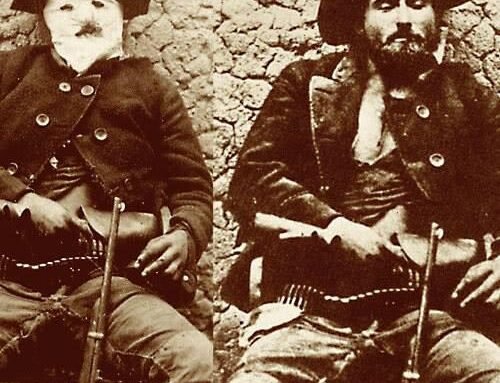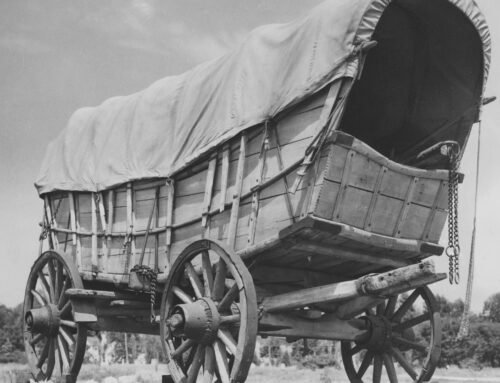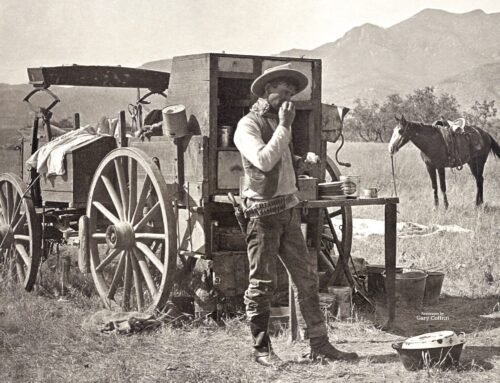Scalping in the Old West
By western author Nick Brumby

“While no pain was perceptible, the removing of [my] scalp sounded like the ominous roar and peal of distant thunder.”
— Josiah Wilbarger, scalped by Comanches
It was the stuff of nightmares – having your scalp torn from your skull for it to be displayed as a trophy of war. Thousands of settlers, soldiers, cowboys and Native Americans across the length and breadth of the American Frontier fell victim to this most gruesome of fates.
Yet despite the terrifying prospect of being scalped and dying a lonely death, millions of hardy pioneers ignored the risk and pushed ever further West, looking for a fresh start and a new home.
While the vast majority of victims perished during a scalping, either from shock and blood loss, or from other wounds sustained during the attack, a handful of victims survived this fearsome torture to speak of the experience.
One such person was Robert McGee. In 1864, 13-year-old McGee was headed west on the Santa Fe Trail. After his parents died, the boy continued the journey as a teamster working a wagon train bringing supplies to New Mexico. Due to the danger posed by hostile Sioux warbands, the wagon train had a US army escort.
 The wagon train made good time. On July 18, flagging from the heat, the pioneers made camp near Walnut Creek, not far from Fort Zarah near present-day Great Bend, Kansas. With a fort so close, the teamsters neglected security, and they ended up camping about a mile away from their army escort.
The wagon train made good time. On July 18, flagging from the heat, the pioneers made camp near Walnut Creek, not far from Fort Zarah near present-day Great Bend, Kansas. With a fort so close, the teamsters neglected security, and they ended up camping about a mile away from their army escort.
The camp was soon attacked by 150 Brule Sioux Indians, led by their chief, Little Turtle. The soldiers protecting the wagon train were delayed, and every member of the caravan was brutalized and executed in various grisly ways. The warriors rode in and slaughtered the pioneers within minutes.
McGee was taken before Little Turtle. The chief put a bullet in McGee’s back, but the boy was still conscious. Little Turtle put two arrows through him, then took his blade and removed sixty-four square inches of scalp from McGee’s head, starting just behind the ears. As he lay on the ground more Sioux attacked him with knives and spears.
When the soldiers caught up with the wagon train they found McGee and another boy alive. Somehow the scalpless McGee survived his experience. He lived until at least 1890, when he told his story to a local newspaper.

Scalp-taking may have developed as an alternative to the taking of human heads, for scalps were easier to take, transport, and preserve for subsequent display. Specific scalping techniques varied somewhat from place to place, depending on the desired shape, size, and intended use of the severed scalp, and on how the victims wore their hair, but the general process was the same.
To do it right, the scalper would grab a handful of the victim’s hair, and circled the head quickly with a knife and then yanked the hair from the scalp with the skin attached. Usually a victor would place his knee in the back of his slain foe while he committed the act. Afterwards, the scalp would be stretched within a hoop made of sapling to dry, painted on the skin side and then hung on a pole.
 Archeological evidence shows that scalping dates back thousands of years and developed independently in various cultures in both the Old and New Worlds.
Archeological evidence shows that scalping dates back thousands of years and developed independently in various cultures in both the Old and New Worlds.
One of the earliest examples was a man in Sweden who had been scalped 5,000 years ago. The ancient Greeks wrote of the nomadic Scythians collecting scalps of their enemies on the bridles of their horses, as did the Visigoths in what would become Germany. Scalping was also known in 10th Century England, while in 1845 a mercenary in Africa observed 700 scalps displayed as trophies by Amazon warriors in what would become Benin.
Many Native American tribes practiced scalping, in some instances up until the end of the 19th century. Native American tribes in the Southeast took scalps to achieve the status of a warrior and to placate the spirits of the dead, while most members of Northeastern tribes valued captives over scalps. Among Plains tribes, scalps were taken for war honors, often from live victims. As a challenge to their enemies, some Native Americans shaved their heads.

www.rarehistoricalphotos.com
Some warriors grew a ”scalp lock,” a braided portion of hair that hung down the back of the head like a pigtail, which they decorated with bits of fur, wam pum and feathers, as a taunt and challenge to their enemies.
Treatment of scalps differed according to each tribe. Usually when a victorious war party returned to his village, a scalp dance would be performed. The women carried the scalps on poles as the warriors reenacted their achievements in the dance. Some were kept as symbols of prestige by the warrior who had taken them. If the hair was long enough, he would decorate his clothing, weapons or bridle with the enemy scalps.
Warriors of the Apalachee tribe of northern Florida decorated their bows with the scalps of Spanish explorer Hernando de DeSoto’s men. Some tribes made sacrifices of the scalps to the gods; others made scalps of particularly brave men a part of a medicine bundle in an effort to share their bravery.
Apaches did take scalps, however, that they would then conduct elaborate ceremonies to purify them with smoke. They, like the Navajos, believed that the spirits of the dead could harm them unless they were pacified.
The entire skin of the head, including the ears, was taken as a trophy by the River Yumans of southern Arizona. Enemy warriors who were slain during a battle were scalped by an individual who had obtained his special scalping power from a dream. The Teton Dakota and Plains Cree took all the skin from the head and face of their enemies as well.

However Native American tribes were at risk of being scalped not just from other tribes, but also from settlers and soldiers looking for revenge and to sow some terror of their own. In 1851 the Tehama Massacre in California saw U.S. soldier and citizens raze villages in Native communities and scalp hundreds of men, women, and children.
Scalping also occurred during the Sand Creek Massacre on November 29, 1864, during the Indian Wars, when U.S. Army volunteers destroyed the village of Cheyenne and Arapaho in southeastern Colorado Territory, killing and mutilating an estimated 150 Native Americans. An 1867 New York Times article reported that “settlers in a small town in Colorado Territory had recently subscribed $5,000 to a fund ‘for the purpose of buying Indian scalps (with $25 each to be paid for scalps with the ears on)’ and that the market for Indian scalps ‘is not affected by age or sex’.” The article noted this behavior was “sanctioned” by the U.S. federal government.
Robert McGee’s survival was almost miraculous, but he wasn’t the only man to be scalped and live to tell about it. In 1833 Josiah Wilbarger was set upon by Comanche Indians about four miles east of modern Austin, Texas. He was shot with arrows and scalped and left for dead, but the man survived 11 more years. In fact he only died after hitting his head on a low beam in his home, cracking his fleshless skull and exposing his brain.
Wilbarger said that being scalped was surprisingly painless, but “while no pain was perceptible, the removing of his scalp sounded like the ominous roar and peal of distant thunder.”

William Thompson
Another survivor was Englishman William Thompson. During an ambush by Cheyenne warriors in 186, he was shot in the shoulder, and his scalp was ripped from of his skull. During the attack, Thompson fainted, but the summer heat stopped the bleeding.
For some reason his attackers left Thompson’s scalp next to the knocked-out. After he came to, he picked it up and went back to Omaha, where attempts were made to reattach it to his skull.
Unable to get his scalp fixed back onto his head, Thompson did the next best thing: he went back to England and put his scalp on display for money. William Thompson’s scalp is now archived at the Main Library in Omaha, Nebraska.

About Nick Brumby
I like a good story. And of all stories, I love westerns the most.
As a kid, I spent far too many afternoons re-watching Clint Eastwood spaghetti westerns, picking up ‘Shane’ for just one more read, or saddling up beside Ben Cartwright when ‘Bonanza’ was on TV each afternoon.
I’m a former journalist and I love horses, dogs, and the occasional bourbon whiskey. I live with my wife, daughter and our ever-slumbering hound in a 1800’s-era gold mining town – our house is right on top of the last working gold mine in the area. There may not be much gold left, but there’s history wherever you look.
I hope you enjoy my westerns as much as I enjoyed writing them!
Happy trails,
Nick

























